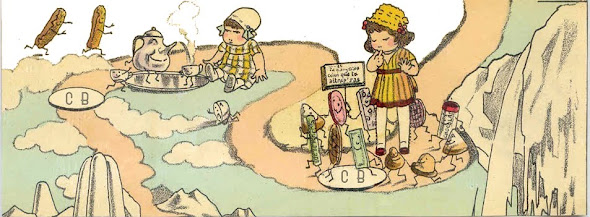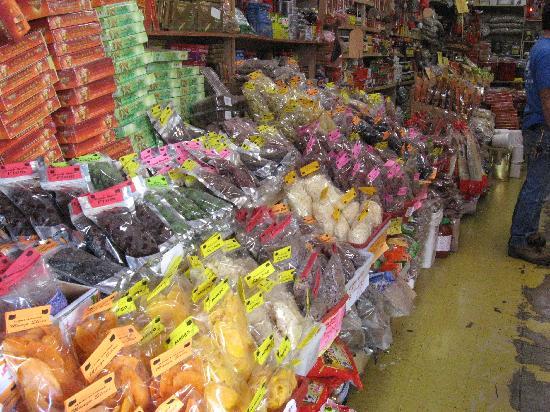Sep 26, 2011
Sep 18, 2011
Don't wreck a sublime chocolate experience by feeling guilty. ~Lora Brody
Blog reached 134 readers today!
Same as the number of days till I hope to open.
Thanks Friends
I am gearing up for a productive week
Same as the number of days till I hope to open.
Thanks Friends
I am gearing up for a productive week
Sep 17, 2011
Explain the Name

Candy What? Candy Babel!
What does Babel mean you ask?
Definition of BABEL Ba·bel noun \ˈbā-bəl, ˈba-\
1: Often not capitalized a : a confusion of sounds or voices b : a scene of noise or confusion
Origin is Middle English, First Known Use: 14th century
2: The phrase "The Tower of Babel" does not actually appear in the Bible; it is always, "the city and its tower" (אֶת-הָעִיר וְאֶת-הַמִּגְדָּל) or just "the city" (הָעִיר). According to the biblical etymology, the city received the name "Babel", from the Hebrew word "balal", meaning to jumble.
3: A city in Shinar where the building of a tower is held in Genesis to have been halted by the confusion of tongues. The story explains the confusion of tongues: variation in human language.
My reading of the text sees G*d's actions not as a punishment for pride but as an etiology of cultural differences, presenting babel as the cradle of civilization. At Candy babel we take the theme of cultural differences and provide candy's from around the world. Candy like human language is full of variation, these differences help us to better appreciate one another. You may not have a chance to travel the world or learn multiple languages, but at candy babel you can experience the world one bite at a time.
1: Often not capitalized a : a confusion of sounds or voices b : a scene of noise or confusion
Origin is Middle English, First Known Use: 14th century
2: The phrase "The Tower of Babel" does not actually appear in the Bible; it is always, "the city and its tower" (אֶת-הָעִיר וְאֶת-הַמִּגְדָּל) or just "the city" (הָעִיר). According to the biblical etymology, the city received the name "Babel", from the Hebrew word "balal", meaning to jumble.
3: A city in Shinar where the building of a tower is held in Genesis to have been halted by the confusion of tongues. The story explains the confusion of tongues: variation in human language.
My reading of the text sees G*d's actions not as a punishment for pride but as an etiology of cultural differences, presenting babel as the cradle of civilization. At Candy babel we take the theme of cultural differences and provide candy's from around the world. Candy like human language is full of variation, these differences help us to better appreciate one another. You may not have a chance to travel the world or learn multiple languages, but at candy babel you can experience the world one bite at a time.
Sep 16, 2011
Welcome to Candy Babel Blog!
China Candy, Chocolate & Preserved Fruits Market Report
Some Interesting research to share!
According to Zeefer Consulting's latest market research
report - China Candy, Chocolate & Preserved Fruits Market Report and
calculated according to Zeefer China Market Size formula, China candy,
chocolate & preserved fruits market size in 2010 exceeded RMB 70 billion, a
growth of more than 15% on a year-on-year basis.
In terms of market position of foreign enterprises in China, in 2010, there were more than 100 foreign enterprises above designated size engaged in the candy, chocolate & preserved fruits industry, accounting for more than 15% of all candy, chocolate & preserved fruits enterprises above designated size across China. These enterprises achieved a sales revenue of more than RMB 30 billion in all, accounting for more than 40% of the total sales revenue from all candy, chocolate & preserved fruits enterprises above designated size across China. Foreign candy, chocolate & preserved fruits enterprises achieved a profit margin of more than 10%, higher than the industry average, and they achieved a ratio of return on assets of more than 15%, higher than the industry average.
In terms of the industry size, in 2010, enterprises above designated size inside the candy, chocolate & preserved fruits industry achieved a sales revenue of more than RMB 75 billion in all. They produced a total of more than 1,565,000 tons of candy, a rise of more than 15% in total production on a year-on-year basis. The total assets of all enterprises in the industry exceeded RMB 45 billion, a rise of more than 15% on a year-on-year basis. On an annual average, employees in candy, chocolate & preserved fruits industry were more than 140,000, an increase of more than 6% on a year-on-year basis. In terms of industry profit, in 2010, enterprises above designated size in candy, chocolate & preserved fruits industry across China achieved a profit of more than RMB 7 billion in all, a growth of more than 20% on a year-on-year basis. On average, enterprises achieved a profit margin of more than 10%. The industry average of the rate of return on assets was higher than 10%, and the rate of return on net assets was higher than 25%. In terms of candy, chocolate & preserved fruits import and export, in 2010, the value of imported candy, chocolate & preserved fruits products in China was more than USD 200 million, and Italy, Belgium and Germany ranked top 3 as Origin of Imported Goods, imports from these top three origins added up to USD 102.9 million, accounting for more than 45% of the gross imports. In 2010, the gross export of candy, chocolate & preserved fruits products exceeded USD 750 million, and USA, Hong Kong and Japan ranked top 3 as export destinations. Exports to these destinations added up to USD 287.8 million, accounting for more than 35% of the gross export. Guangdong, Fujian and Shandong ranked top 3 as domestic origins, exports from these origins added up to USD 584.2 million, accounting for more than 70% of the gross export across China. In terms of the market share in China, top 10 leading enterprises in candy, chocolate & preserved fruits industry won a market share of more than 40% in all in terms of the sales revenue, and the top leading enterprise gained a market share of more than 10% (source: data for 2008). In terms of the market position of imported candy, chocolate & preserved fruits products, in 2010, imported products won a market share of less than 3% in the candy, chocolate & preserved fruits market across China."
Sep 14, 2011
The History of Gummi Candy
Hans Riegel invented gummi bears during the 1920s.
By Mary Bellis


Gummi
Bears are displayed in a glass jar at Sweet Dish candy store in San
Francisco, California. Candy sales are rising as Americans seek to
comfort themselves during the difficult economic times.
Justin Sullivan/Getty ImagesHans Riegel invented gummi bears (the first
gummi candy) and gummi candy during the 1920s. Riegel was the owner of
the German candy company Haribo. Haribo went on to manufacture the first
American made gummi candy in 1982.
In
1981, another German gummi candy manufacturer called Trolli decided to
made the first gummi worm. Gummi worms have become the most popular
gummi candy ever made. The average Brite Crawler the number one sold
gummi worm is two inches long.
Edible
gelatin is the basic ingredient in gummi candy. Gelatin is also found
in soft caramels, marshmallows, foam-filled wafers, licorice, wine gums,
pastilles, chocolate coated mallows and a host of other sweets, because
it gives candy elasticity, the desired chewy consistency, and a longer
shelf life. Gelatin has been used since the time of the Egyptian
Pharaohs.
How Gummi Candy Is Mass Produced
According to Black Forest the makers of assorted gummies, "gummi candies are a blend of corn starch, corn syrup, sugar, gelatin, color, and flavor." The ingredients are weighed, mixed, and pumped into a special candy cooker that Black Forest uses, a 128 foot long stainless steel coil that cooks the candy by steam outside of the coil. Then the cooker pumps the gummi into a vacuum chamber to remove excess moisture. From the vacuum chamber the gummi moves on to a mix station where colors, flavors, acids, and fruit concentrates are mixed into the gummi stock. Next, the Mogul, a starch moulding machine pumps the gummi stock into starch filled mould boards that shape the gummi candies. After curing, the gummies are removed from the moulds, packaged, delivered, and sold.See's Rich Heritage
A little bird told me that perhaps Sees Candy used to be made 2723 N 7th Ave? I have got to hit up the historical society to see if this might be true?
"Throughout the history of See's Candies, Mary See has symbolized the old-fashioned virtues of homemade quality and friendly service. The spectacled, silver haired woman still smiles with pride from candy boxes shipped throughout the world, and her original recipes are savored by millions to this day.
When Charles See arrived in Los Angeles from Canada in 1921 to try his hand at the confection business, he decided that no image would better reflect the personality of his fledgling venture than that of his mother. Apart from using her recipes as a foundation, See knew that keeping things in the family was the only way to bring about the kind of lovingly crafted product he desired.
See along with his mother and his wife, Florence, opened the first See's Candies shop and kitchen on Western Avenue in Los Angeles in November of 1921. The sparkling clean, black and white shop was designed to resemble Mary See's home kitchen.
Benefiting from the wide acceptance of an unusually high quality candy, See's was able to grow steadily from that first shop in Los Angeles to twelve shops by the mid-1920's and thirty shops during the depression. By 1936, See's was able to expand to San Francisco.
Mary See died in 1939 at the age of 85, but the company's ability to adjust to changing times - without abandoning the passion for quality and service that Mary See represented - kept it going strong throughout the decades to come.
Following World War II, See's Candy Shops grew as California grew, and the See's family continued the tradition, opening up shops throughout the state. In the 50's, See's established itself with the new and growing phenomenon of shopping malls. See's customers continued to recognize the See's Candies product for its quality and taste, and continued to visit See's old-fashioned black and white shops, enjoying a visit to a time past where service was paramount.
In 1972, the See's family sold the company to Berkshire Hathaway Inc., presided over by Chairman Warren Buffett and Vice Chairman Charles Munger. Utilizing his philosophy of acquiring solid companies where he could follow his "hands off" policy, Warren Buffett installed Charles N. Huggins as President and CEO.
Charles Huggins dedicated himself to the continuance of the company he joined in 1951, guiding it with the old-fashioned values set by Charles See until his retirement at the end of 2005.
He is succeeded by current See's President and CEO, Brad Kinstler, a longtime Berkshire Hathaway team member.
Today, "California's Famous Old Time Candies®" are sold in over two hundred shops throughout the West, a true sign of their enduring popularity. And, to this day, Charles See's living motto, "Quality Without Compromise®" continues to guide the company. "
Subscribe to:
Posts (Atom)





